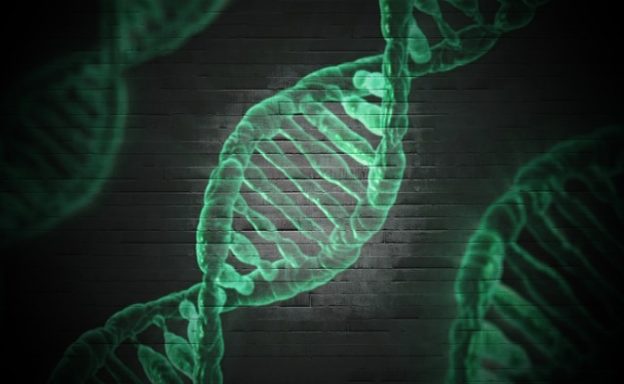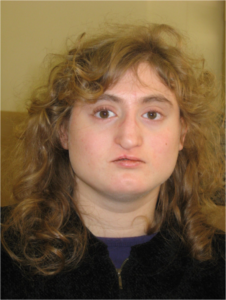DiGeorge Syndrome, Severe Combined Immunodeficiency and more
Table of Contents

Image: “DNA Microscopic Cell Gene Helix Science Medical” by typographyimages. License: Public Domain
Definition
DiGeorge Syndrome is a result of a microdeletion in a segment of chromosome 22. Other names for this syndrome include:
- Velocardiofacial syndrome
- Shprintzen syndrome
- conotruncal anomaly face syndrome
- 22q11.2 deletion syndrome
Deletion is heterozygous and involves the long arm, q, of chromosome
22, hence the name 22q11.2 deletion syndrome. Up to 50 genes may be
affected as a result of such deletions. About 93 % of cases are de novo
mutations during early fetal development while 7 % are inherited in
autosomal dominant patterns from affected parents. The frequency of DiGeorge Syndrome is 1 in 4000 births.
22q11.2 deletion syndrome is inherited in an autosomal dominant pattern.
Signs and Symptoms of DiGeorge Syndrome
There are variable symptoms related to the DiGeorge Syndrome and a marked variability in clinical expression among different individuals. Commonly associated signs and symptoms include:
- Congenital heart disease, found in around 40 % of the individuals.
- Common anomalies are: Interrupted aortic arch, patent truncus arteriosus, tetralogy of Fallot, ventricular septal defect
- Poor circulation of oxygenated blood results in cyanosis
- Palatal defects, particularly cleft palate, and velopharyngeal incompetence
- Affected individuals have characteristic facial features like hypertelorism, tubular nose,
- Learning difficulties are found in 90 % of the cases (attention deficit disorders and cognitive deficits are common)
- Deficiency of growth hormone
- Hypoparathyroidism, found in around 50 % of the cases (Hypoparathyroidism leads to hypocalcemia)
- Skeletal abnormalities
- Problems related to feeding
- Thymic aplasia due to failure to develop third and fourth pharyngeal pouches
- Conductive and sensorineural hearing loss
- Seizures which may be due to hypocalcemia
- Anomalies of respiratory and digestive tracts (Laryngotracheoesophageal problems)
- Renal anomalies are found in up to 37 % of the patients
- Autoimmune diseases such as Graves disease and rheumatoid arthritis
- Poor immunity due to reduced T cells
- Psychiatric disorders such as depression, bipolar disorder, attention deficit hyperactivity disorder (ADHD) and schizophrenia
Diagnosis of DiGeorge Syndrome
Variations in the phenotypes of DiGeorge syndrome make the diagnosis difficult. Patients who have one or more deletion signs are more likely to have 22q11.2 deletion syndrome.
- Genetic testing is used for prenatal diagnosis using BACs-on-Beads or fluorescence in situ hybridization
- Karyotyping may not detect microdeletions
- Array-comparative genomic hybridization is used to detect deletions or duplications through screening the entire genome
- Latest diagnostic methods include Quantitative Polymerase Chain Reaction and Multiplex Ligation-Dependent Probe Amplification Assay
- ECG
- Cardiac echocardiography (ECHO)
- Serum calcium and phosphorus
- Thyroid profile test
- Chest x-rays to look for thymus
- Complete blood picture (CBC)
- Immunoglobulin levels
- Renal ultrasound
Treatment of DiGeorge Syndrome
There is no cure for the 22q11.2 deletion syndrome.
Management is aimed at treating the associated features of the disease.
Treatment revolves around a multidisciplinary approach with the aim to
improve the function of affected organ systems.
- Immune problems due to the absence of thymus are necessary to be identified in the early stages
- Blood transfusions and live attenuated vaccines are used with precaution in the affected individuals
- In rare cases, thymus transplantation is also possible
- Use of antibiotics for treating frequent bacterial infections
- Lifelong calcium and vitamin D supplements are required to address hypocalcemia resulting from hypoparathyroidism
- Treatment of structural abnormalities such as surgery for congenital heart abnormalities
- Early intervention and developmental evaluation is the key

Comentários
Enviar um comentário